Several keen fly fishers now use this salmon fly most of the season. This pattern is good for rivers in a higher state of flow.
I do not claim to have invented this fly, but this is the way I dress it, and fish with it , and those who have tried this have shared in the success. After all this is what it is all about!
The hook
This is so important. I insist on a heavier, strong hook, for preference a double size 6 or 8. In my opinion too many shop salmon flies are tied on "low water" salmon hooks that do not get down to the fish and are not strong so that they straighten.
It is so easy to test this - put your hook in a vice and with a finger lift up, not too much, and it should spring back - if not it will remain and so it will straighten when for a brief period you are into a good fish.
The secret is in the tempering of the hook - that plus wire thickness. Mustad have made good salmon hooks but hopefully the supply problem will improve. VMC make good hooks and the Ken Sawada double is my favourite.
The tail
Select 6-7 long fibres of deer hair, dyed red. These should be flexible and not stiff. I prefer movement in the water - it should have that vital life-like attractive quality.
I also add 2 strands of gold twinkle and one of copper, just to give that suggestion of a little flash. (do not overdo it!)
The body
Even though this is a heavier hook, I wind one layer of medium lead wire (touching turns). This ensures that the fly will get down quickly to the fish - so important in spring and autumn fishing as well as those rivers which have a summer spate.
I use medium copper flat tinsel ribbed with medium copper wire and run this up 2/3rds of the body, leaving room for the wing and hackle.
Wing
This is one whole Golden Pheasant tippet dyed red. Tie this in so that it lies at an angle along the shank of the hook, and no longer than the start of the bend. Over this wing tie in 3-4 strands of gold twinkle - no longer than the wing.
Front hackle
Select a dyed red "henny cock" with the fibres no longer than the length of the shank of the hook. 3-4 turns should be sufficient. Secure and trim off waste. Finish off with a head using red silk and pulling back the hackle fibres so they do not become trapped. Add two coats of varnish.
This is a fly that has achieved recent success. I saw 6 good salmon caught with this fly on the Tyne when I was there for 2 days.
I am aware that several keen fly fishers now use this most of the season - so it seems this is more than a passing fancy... This pattern is my suggestion for rivers in a higher state of flow. Naturally when there has been no rain for a period, then we must think of smaller flies.
Fishing suggestions
My ideal presentation is at angle within a 45 degree downstream below you. It gives the time for your fly line and fly to settle and work more effectively. I feel too many of us cast straight to the far bank and the fly speeds across the river.
I know there are instances when salmon may chase this, but let us think in terms of presenting a fly and tempting that salmon to take. Finally, when the fly and the fly line have swung right round to our side of the bank, directly below you, all too often we commence casting.
Think about a salmon that has followed the fly and is about to take. We will miss this opportunity by casting too soon. So, may I also suggest that the rod is held in one hand by your side, and the arm working parallel to the water, working up and downstream - gently. Think of the hackles on this fly opening and closing. They could well be so irresistible to that salmon that has, out of curiosity, followed your fly.
- Log in to post comments


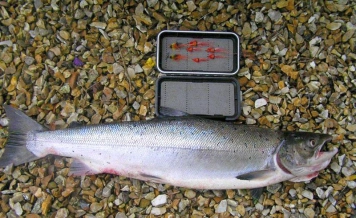
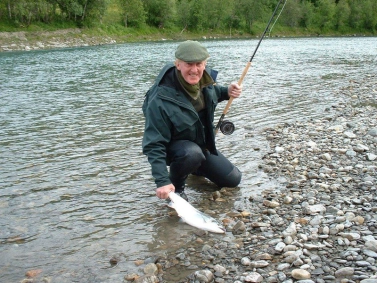

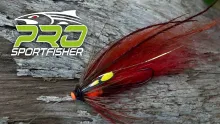
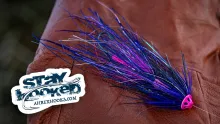

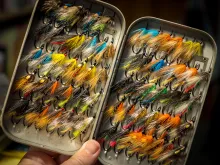

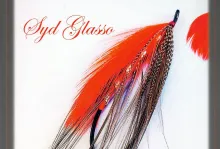

look like a local ty
look like a local tyne fly
this pattern has bee
this pattern has been very successful in the isle of lewis Stornoway.Usually tied on a size 10 or 12 kamasan either double or single , however it must be fished slow or static